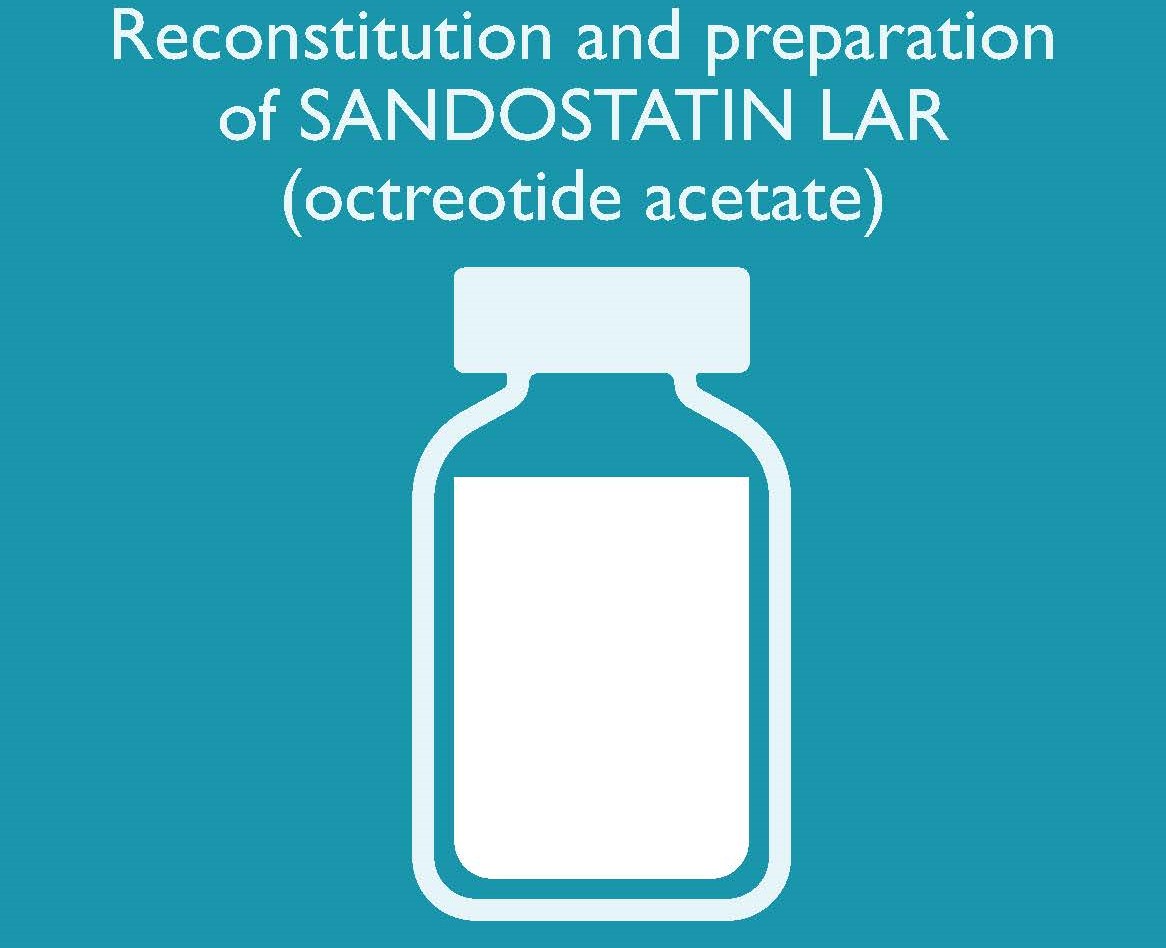Click here for Prescribing Information
Sandostatin® LAR® (octreotide acetate)
Treatment of patients with acromegaly in whom surgery is inappropriate or ineffective, or in the interim period until radiotherapy becomes fully effective.
Treatment of patients with symptoms associated with functional gastro-entero-pancreatic endocrine tumours e.g. carcinoid tumours with features of the carcinoid syndrome.
Treatment of patients with advanced neuroendocrine tumours of the midgut or of unknown primary origin where non-midgut sites of origin have been excluded.
Treatment of TSH-secreting pituitary adenomas:
• when secretion has not normalised after surgery and/or radiotherapy;
• in patients in whom surgery is inappropriate;
• in irradiated patients, until radiotherapy is effective
Resources for you:

Reconstitution and preparation of SANDOSTATIN LAR
A guide for HCPs on how to prepare and administer SANDOSTATIN LAR.
How to administer and prepare SANDOSTATIN LAR
A step-by-step video on how to prepare and administer SANDOSTATIN LAR.
Please note: Appearance of the product pack may look different in Ireland. The guidance for intra-muscular injection is for demonstration purposes only. Please defer to local guidance and personal training for intra-muscular administration.
